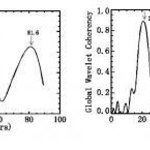Atmospheric

With the successful leveling off of CO2, a long-lasting greenhouse gas implicated for most global warming, due to a switch to natural gas, activists have been focusing on methane.
While some of the claims have been controversial and used decades old Soviet data to exaggerate the issue, we do know that about 20 percent of methane emissions are due to livestock. Most people and a better standard of living means more need for food. Ruminants, like sheep and cows, burp methane.
It's not the crisis vegetarian groups make it out to be. In New Zealand, where sheep outnumber people 7 to 1, there…

Though mainstream journalism likes to link every bit of weather, even a deep freeze last winter, to global warming, the "Arctic amplification phenomenon" is unlikely to lead to more days of extreme cold, new research has shown.
The Arctic amplification phenomenon refers to the faster rate of warming in the Arctic compared to places further south. It is this phenomenon that has been linked to a spike in the number of severe cold spells experienced in recent years over Europe and North America.
New research by University of Exeter expert Dr James Screen has shown that Arctic amplification has…

Titan, the most famous moon around Saturn, has an atmosphere that is a brownish-orange haze. The dirty color comes from a mixture of hydrocarbons, molecules that contain hydrogen and carbon, and nitrogen-carrying chemicals called nitriles. The family of hydrocarbons already has hundreds of thousands of members, identified from plants and fossil fuels on Earth, and even more could exist.
Researchers recently set out to simulate Titan's chemistry. In doing so, the team was able to classify a previously unidentified material discovered by NASA's Cassini spacecraft in the moon's smoggy haze…

Do you know where the solar system ends? Not really. We know it does, but picking a hard boundary is difficult.
And when it comes to anthropogenic emissions and air quality, it is hard to know for sure also. How much of CO2 is natural? How are we past the tipping point for CO2 levels while warming has not risen?
How are emissions calculated? Different ranges of emission fluxes have been proposed by several studies, which have provided emissions at different spatial and temporal scales. Reconciling them all is difficult An EU funded project called Monitoring Atmospheric Composition&…

Like breathing? Thank water. And the continents.
One of the greatest mysteries of evolution involves oxygen levels in the atmosphere. At various points throughout 4.5 billion years of geological history, carbon levels have been 10X what they are today, yet life pushed on. Today, oxygen concentration is 21% of the atmosphere. One of the biggest puzzles in geochemistry is how it went from trace amounts to just the right one.
A research group has discovered one possible mechanism, relating to the way in which carbon dioxide is removed from the atmosphere over long timescales.
"On the early…

More is often not better. In the old days, naive corporations believed that a product that was not harmful when used according to guidance could be overused and it was just a waste of money. Once DDT got banned in America because more was not better, companies got a little smarter about stressing smart application.
But in different regions and climates, the optimal amount of something like fertilizer can fluctuate. Helping farmers around the globe apply more-precise amounts of nitrogen-based fertilizer can even help combat climate change.
In a Proceedings of the National Academy of Sciences…

Understanding how clouds affect climate is been a difficult proposition, even for a difficult to understand field like climate science.
What controls the makeup of the low clouds that cool the atmosphere or the high ones that trap heat underneath? How does human activity change patterns of cloud formation?
New research in Science suggests we may be nudging cloud formation in the direction of added area and height - and there may be even be a new type. It seems that, in pre-industrial times, there was less cloud cover over areas of pristine ocean than is found there today.
Convective…

In 2007, after a marketing blitz for climate change during much of 2006 and the release of a new UN IPCC report, mentioning that methane had 23X the global warming effect of CO2 would get you shouted down and sternly reminded that CO2 lasts far longer.
That is absolutely correct. Yet recently, twice in the same week, two papers warned us that methane will cause global warming regardless of CO2.
What changed? Well, CO2 emissions went down, and it wasn't due to the $72 billion in taxpayer money which included solar panel subsidies or the afterthought of wind power or the other get-rich-quick…

We know solar cycles impact the weather and the climate but figuring how much, and how much of recent warming has been due to human-controllable variables, has been difficult.
A recent paper found the existence of significant resonance cycles and high correlations between solar activity and the Earth's averaged surface temperature during centuries.
It adopts the wavelet analysis technique and cross correlation method to investigate the periodicities of solar activity and the Earth's temperature as well as their correlations during the past centuries.
Global wavelet coherence between…

Either male hurricanes need to break through that glass ceiling of really dangerous storms, or we underestimate storms with female-sounding names and that puts more people in peril, or business scholars have taken causalation (correlation does not equal causation takes too long to write over and over) to a new level.
An analysis of more than six decades of death rates from U.S. hurricanes shows that severe hurricanes with a more feminine name resulted in a greater death toll, simply because a storm with a feminine name is seen as less foreboding than one with a more masculine name. As a…